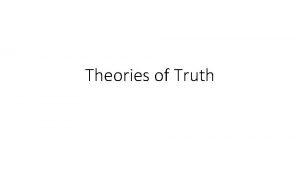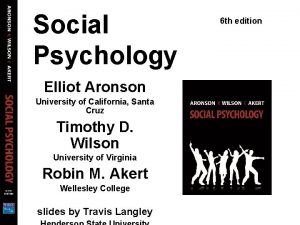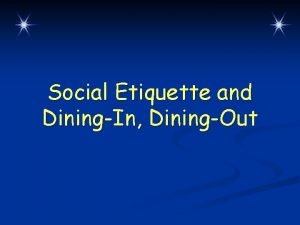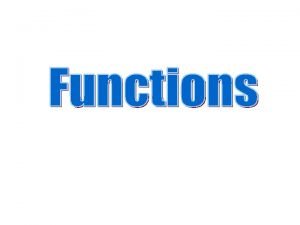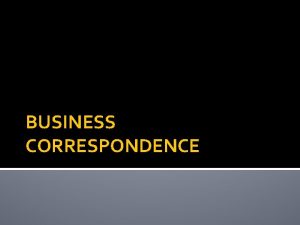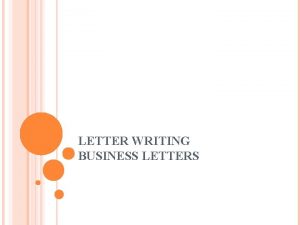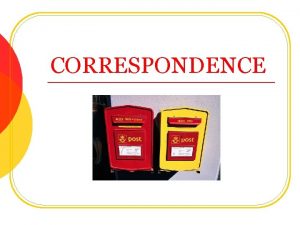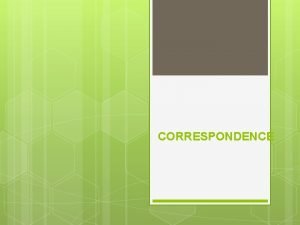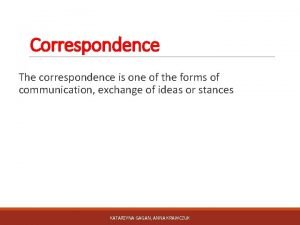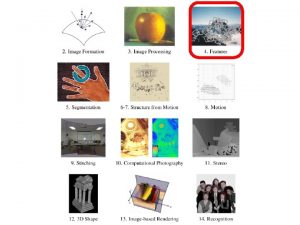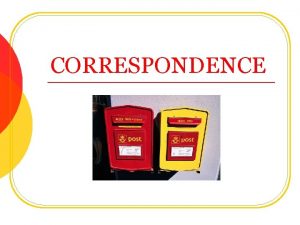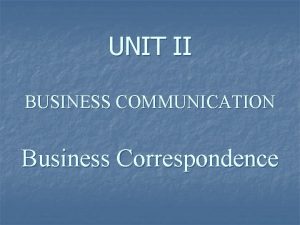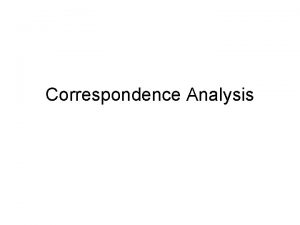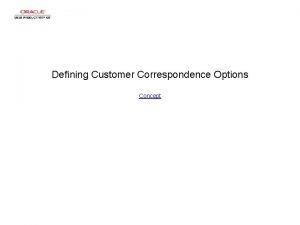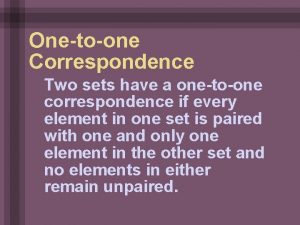WRITING CORRESPONDENCE CHAPTER 9 WRITING CORRESPONDENCE FOCUS ON












- Slides: 12

WRITING CORRESPONDENCE CHAPTER 9. WRITING CORRESPONDENCE

FOCUS ON THE PROCESS When writing correspondence, pay special attention to these steps: Planning Choose the appropriate type of correspondence for the writing situation Drafting For letters, memos, and email, clearly state your purpose, use headings to help your readers, summarize your message, provide adequate background, organize the discussion, and highlight action items. Proofreading Write quickly; check carefully. Proofread everything! CHAPTER 9. WRITING CORRESPONDENCE

Choices and Strategies: Choosing a Type of Correspondence If the situation is… Formal And you are writing to… People outside/within organization Try this…. Letters Moderately Formal People outside organization Letters or email Moderately Formal People within organization Memos or email Informal People outside or within organization Email or microblog CHAPTER 9. WRITING CORRESPONDENCE

Presenting Yourself Effectively: • • • Use the appropriate level of formality. Communicate correctly. Project the “you attitude. ” Avoid correspondence clichés. Communicate honestly. Chapter 9. Writing Correspondence

Elements of a Letters are still a basic means of communication between organizations. You need to understand the elements of a letter, its format, and the common types of letters sent in the business world. Most letters include: • heading • inside address • salutation • body • complimentary close • signature Chapter 9. Writing Correspondence

Common Letter Types • Inquiry letter • Claim letter • Adjustment letter Chapter 9. Writing Correspondence

Writing Memos Like letters, memos have a characteristic format. When you write a memo, organize it so that it is easy to follow. Consider these important organizational elements: • a specific subject line • a clear statement of purpose • a brief summary • informative headings • a prominent recommendation [samples p 224 -231] Chapter 9. Writing Correspondence

Writing E-mails • • • Stick to business. Don’t waste bandwidth. Use appropriate formality. Write correctly. Don’t flame. Chapter 9. Writing Correspondence

Netiquette Guidelines when Writing E-mail • Make your message easy on the eyes. • Don’t forward a message to an online discussion forum without the writer’s permission. • Don’t send a message unless you have something to say. Chapter 9. Writing Correspondence

Considerations for Writing to Intercultural Readers: • the cultural practices of your readers • the language use and tone preferred by your readers • the application choice and use preferred by your readers Chapter 9. Writing Correspondence

Chapter 9. Writing Correspondence

Chapter 9. Writing Correspondence
 Language
Language Porter's competitive strategies
Porter's competitive strategies Drivers of differentiation
Drivers of differentiation Actor focus vs object focus
Actor focus vs object focus Focus on writing
Focus on writing Art in focus chapter 1 answers
Art in focus chapter 1 answers Friendly latter
Friendly latter Correspondence bias
Correspondence bias Correspondence theory of truth
Correspondence theory of truth Formal correspondence catford
Formal correspondence catford Correspondence bias
Correspondence bias Social etiquette and manners jrotc
Social etiquette and manners jrotc Refers to the correspondence between two variables
Refers to the correspondence between two variables








